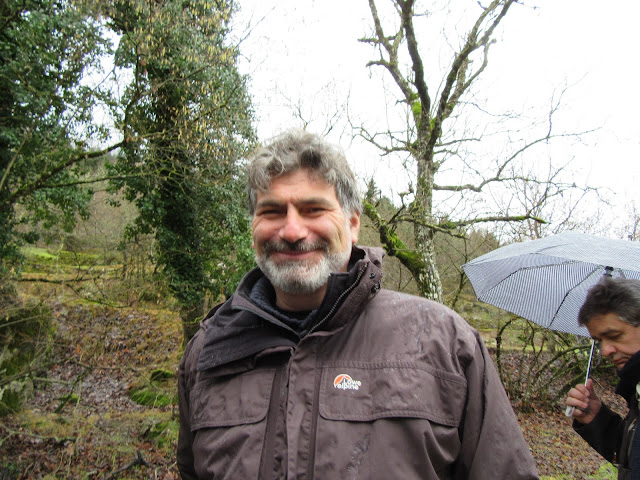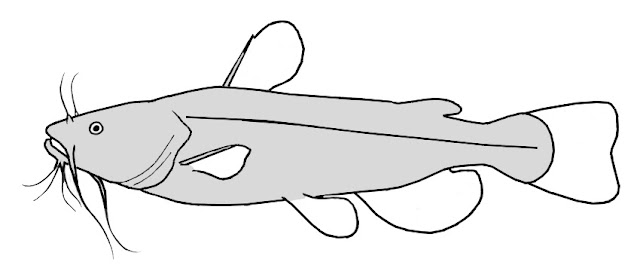Alyki Anavyssou, Anavissos Attiki January 22nd 2016
We are trying to standardize a bird survey scheme at Alyki Anavyssou in Southern Attika - an important wetland area near the Hellenic Centre for Marine Research. I was accompanied by my friends Yannis Kapakos, Ira Theophilou and David Koutsogiannopoulos (who took the pics that follow)
These are some initial organization rules we set today on the second pilot survey:
1. The former salina pans area (fenced area of Alyki) is to be counted in a line transect whereby the birds will be tallied in three following lists: a) within the wetland zone; b) non-wetland zone; c) outside the salina fence area. The so-called "wetland zone" is a roughly outlined in the map above (yellow dotted line) and includes areas dominated by open wetland habitats. Areas outside of this (including the fence itself) are in the terrestrial zone. While walking the transect at a slow and steady pace one holds a record of all species positively identified in their respective "habitat zones". If a species if flushed and moves on to another habitat zone or is overflying it is recorded within the zone it was first detected in.
2. The transect is to be walked the at the same pace each time and at exactly the same route each time (marked in red dotted line above). Two birders, myself and Ira Theophilou know the exact route (mapped roughly above) and we can show this to others who may want to participate.
3. In an effort to standardize this, during the survey one or two people should participate not more than two.
4. The survey should take one hour to complete. (At a slow pace with 4-5 stops). No spotting scope is used. Good binoculars are crucial. Birders should not seek to photograph birds during the transect.
5. We aim to have two survey trails at least two times each month for the next 12 months.
6. The rough wetted area distribution should be mapped each time (as in the map above). A rough estimate will be made (i.e. say % of the Salina Lot's wetland area under water - today it was about 10%).
7. Any disturbance or human interventions must be reported. (i.e. today there was one man picking herbs, no cars, no dogs).
8. Start and end times must be noted exactly.
9. As an addendum to the count-survey the small river-mouth of a tiny stream (the Anavissos Stream) will also be counted (maximum 15 min.). From the river-mouth a quick scan will also help record birds in the cove of Anavissos (an oligotrophic species-poor area).
Today the Alyki Anayssou Site had 23 bird species; 7 species where recorded at the Anavissos Stream river-mouth (a few species such as Moorhen, Kingfisher were found only here).
The whole experiance is a nice walk.
 |
| Yellow-legged and Black-headed Gulls at pooling waters in Alyki Anavyssou. (Photo by David Koutsogiannopoulos). |
 |
| Retama retam a winter-flowering North African shrub that is quite invasive in Attica.(Photo by David Koutsogiannopoulos - thanks for the great photo David!). |
 |
| Retama retam: Winter flowers for local bees. (Photo by David Koutsogiannopoulos). |
 |
| Stonechat on Cistus.(Photo by David Koutsogiannopoulos). |
 |
| Commmon Serin.(Photo by David Koutsogiannopoulos). |
 |
| Corn Bunting on Cistus.(Photo by David Koutsogiannopoulos). |
 |
| Arthrocnemum (Glaswort species).(Photo by David Koutsogiannopoulos). |
 |
| Arthrocnemum (Glaswort Species).(Photo by David Koutsogiannopoulos). |
 |
| Upland fringe of Alyki with scattered scrub and Common Buzzard (Buteo buteo).(Photo by David Koutsogiannopoulos). |
 |
| Common Kestrel. (Photo by David Koutsogiannopoulos). |
 |
| Date Palm in fruit.(Photo by David Koutsogiannopoulos). |
 |
| Anavissos stream near its River mouth (near the AB Supermarket across from Alyki Anavyssou).(Photo by David Koutsogiannopoulos). |
 |
| Anavissos stream with a fine school of grey mullet (Mugilidae).(Photo by David Koutsogiannopoulos). |



























